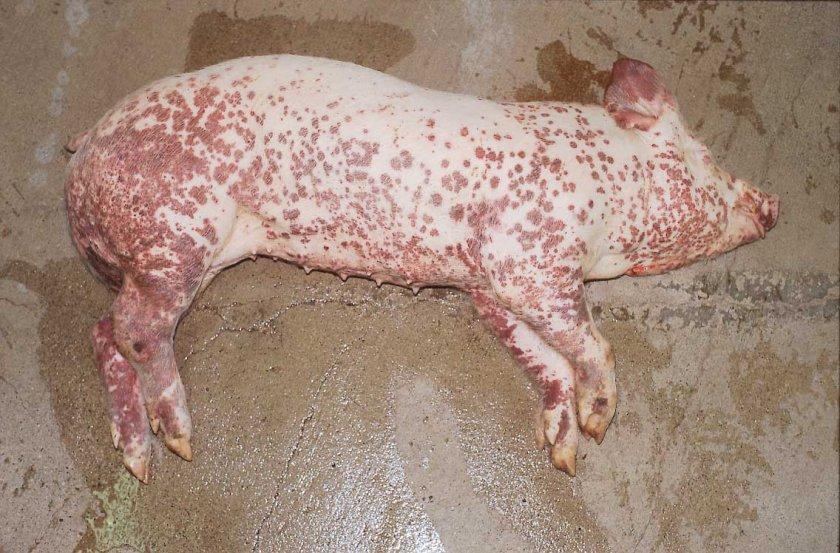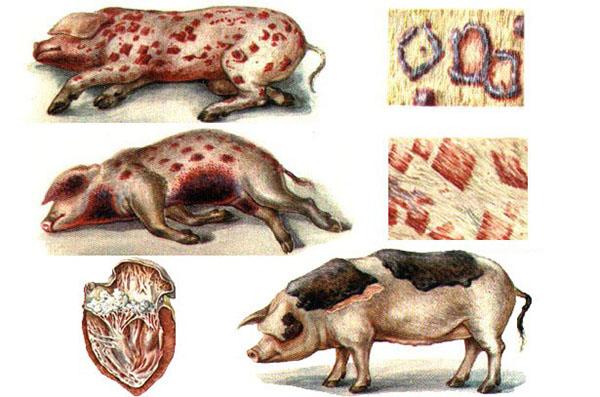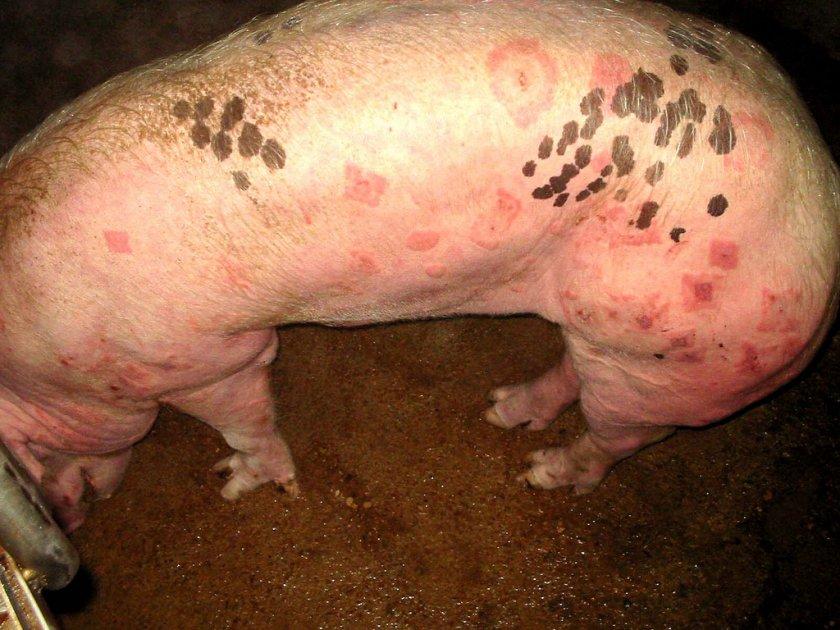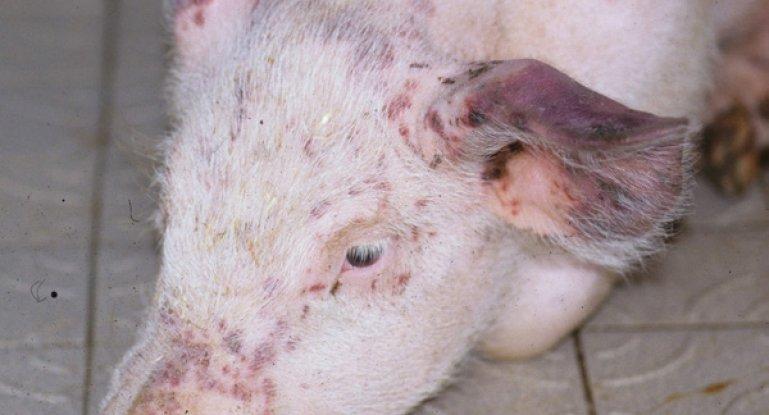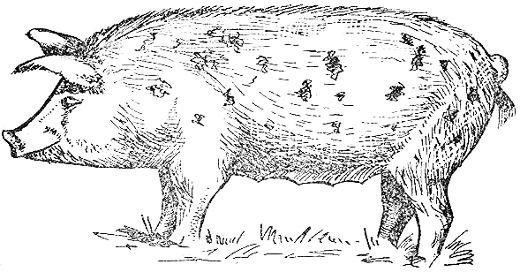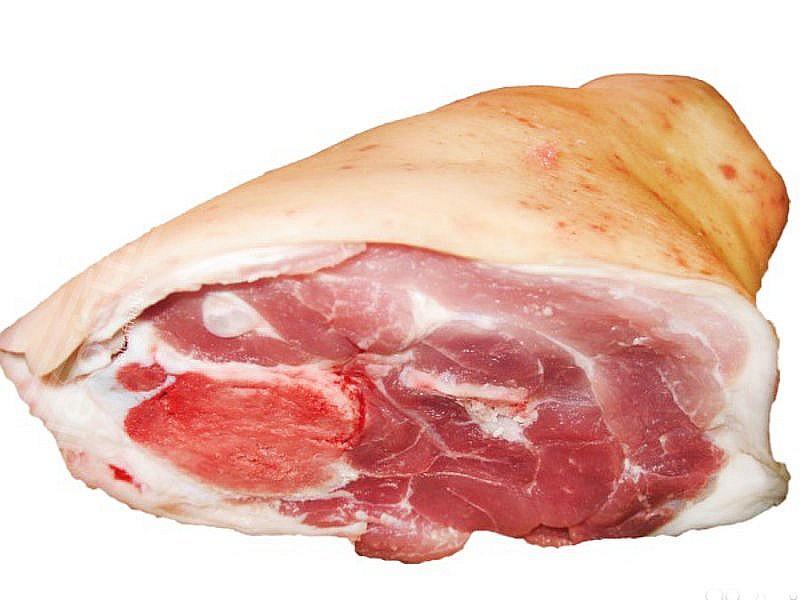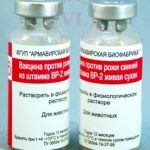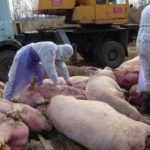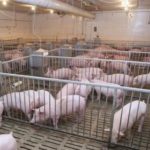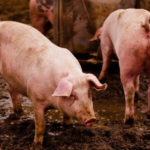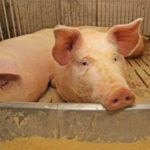At an early age, piglets are exposed to many infections and viruses, which can significantly reduce the number of piglets. One of the common diseases is infection of swine erysipelas. To avoid difficulties, every farmer should know the precautions and nuances of prevention.
Description and danger of the disease
Erysipelas is an infectious disease that occurs acutely or chronically in the form of enzootic outbreaks. Individuals aged 3 months to one year are most at risk of infection. Outbreaks of infection are possible not only in piglets, but also among turkeys, lambs, pheasants and ducks.
The disease has been spreading since ancient times, but in the past its manifestations were mistaken for other infections, including anthrax. This is because the external symptoms appear similar. Now the infection occurs in Russia and a number of European countries. Erysipelas often covers large areas and causes significant economic damage to farms.
Sources of erysipelas
The source of the disease is often found in nature. Spread may be facilitated by contaminated soil or animal slaughter products. The causative agent is a bacterium that can adapt to a new habitat in a short time. The microbe develops in nutrient media, transforming its properties. The characteristics of the microbe are the ability to exist in a stationary state without forming spores and capsules. The bacterium is also characterized by high resistance to external influences, due to which it can remain for a long time in soil, liquid or manure.
However, the virus is susceptible to heat treatment and disinfectants.
Since the surface of the ground often becomes a source of infection, swine erysipelas has a seasonal pattern. As a rule, outbreaks of infection appear only during warm periods of the year. After infection, clinically ill individuals become carriers of the virus, spreading microbes along with waste products.There is also a risk of developing a disease without external penetration of the virus if a latent infection is activated in pigs under stress.
Forms of the disease and their corresponding symptoms
Pig erysipelas occurs in different forms, each of which is characterized by certain symptoms. To determine the form of the disease based on the condition of the animals, it is recommended to familiarize yourself with the nuances of the course of all possible forms.
Lightning fast
In practice, the lightning form is rare. The characteristic features of this form include:
- a sharp increase in body temperature;
- heart weakness;
- general depressed state.
If the disease progresses at lightning speed, individuals cannot be treated. Livestock death occurs 10-12 hours after infection.
Acute
The acute form is observed more often than fulminant and is characterized by the manifestation of septicemia. Infected individuals refuse to feed, they begin to vomit or become constipated. As a result of weakened heart function, there is a possibility of pulmonary edema, cyanosis of the abdomen, chest and neck. Pinkish spots may form on the skin. To begin proper treatment, you need to conduct a differential diagnosis. Otherwise, infected individuals die within a few days.
Subacute
The most common is the subacute form of erysipelas. In sows and young animals it manifests itself with the following symptoms:
- loss of appetite;
- increased thirst;
- heat;
- skin rashes;
- weakness.
The duration of the disease is 1-1.5 weeks. Under favorable conditions, recovery is possible after 2-3 days.
Chronic
The chronic form occurs when the disease is advanced and is manifested by damage to internal organs.As a result of infection, large areas of the skin become red, dense and consist of a necrotic crust. The duration of the disease can be several months, during which gradual tissue rejection occurs through decay.
Pigs suffering from a chronic form of infection slow down in development and growth, so they are often slaughtered. To diagnose the chronic form of erysipelas, parts of the tubular bone, liver, kidneys and spleen are analyzed in the laboratory.
Changes in the body after death
With the rapid progression of the disease, external symptoms do not always have time to appear. In such situations, it is possible to detect the infection only after the death of the pigs. After autopsy of infected individuals, it is often possible to detect multiple hemorrhages, pulmonary edema and hyperemia.
If animals suddenly die due to erysipelas, it is necessary to transfer the corpses to specialists for examination in order to protect the remaining livestock.
Methods to combat the disease
In later stages, pig erysipelas cannot be treated, so when the infection is advanced, pigs are sent to slaughter. To reduce herd losses, the pig farmer must detect the infection at an early stage and treat immediately.
Pharmacy products
Among the medical preparations against swine erysipelas, serum is used, which, when infected, is combined with penicillin in a large dose. When treating animals with antibiotics, including bicillin and penicillin, take 10-20 thousand units per 1 kg of animal weight and dissolve the substance in the serum, adhering to the following proportions:
- 5-10 ml of serum for young animals;
- 30-60 ml for gilts weighing up to 50 kg;
- 50-75 ml for individuals weighing over 50 kg.
Only sterile solutions can be administered. They are injected intramuscularly into the area behind the ear twice a day.
Folk remedies
Traditional methods allow you to alleviate the condition of an infected animal at home before going to a veterinary clinic. Having noticed signs of infection, you need to disinfect the room and isolate the sick pig from the rest of the livestock.
To treat pigs, you need to dilute a bottle of vinegar essence in a bucket of water, soak a thick cloth in the solution and cover the infected animals. If pigs are constipated, do an enema with 1-2 liters of soap solution. Reddened areas on the animal's skin are sprinkled with crushed chalk and a red cloth bandage is applied. The compress gradually relieves swelling and pain. A compress made from yarrow and golden ball has a similar effect.
Is it possible to eat meat from sick pigs?
Veterinarians do not prohibit eating meat from pigs that have had erysipelas. To prevent the infection from creating negative consequences for a person, it is enough to first disinfect the meat through thorough heat treatment.
Despite its safety, many people do not eat meat from sick animals, seeing as how the infection manifests itself and develops. In most situations, meat products are sold to meat processing plants for processing into sausage, since foci of disease are absolutely invisible in them.
Preventive actions
Most often, prevention consists of regularly maintaining the animal’s immunity. The most effective are the BP-2 strains, which provide resistance against erysipelas and plague. If the erysipelas virus has managed to penetrate the pig farm, a set of actions needs to be carried out. Including:
- Establish restrictions on the export and import of new pigs.
- Isolate infected pigs and contact a veterinarian.
- Apply the vaccine to the remaining livestock and monitor their well-being daily.
- Disinfect the premises and surrounding areas, drinking bowls and animal care equipment.
The ban on importing and exporting products from the farm is lifted only a few weeks after the last pig has recovered. During this period, the number of dead pigs and the availability of vaccination in healthy ones are monitored. The level of cleanliness in the pen and in the areas where walking was carried out is also checked.

